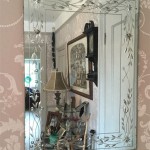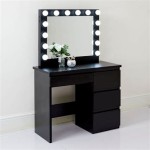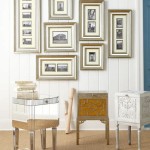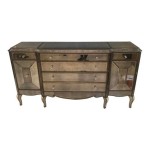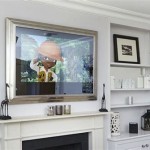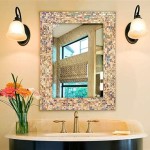How Do Lighted Bathroom Mirrors Work?
Lighted bathroom mirrors, a staple in modern bathrooms, provide targeted illumination for grooming tasks. Their functionality stems from a combination of traditional mirror technology and integrated lighting systems. This article explores the various aspects of these illuminated mirrors, from the underlying principles of reflection to the different types of lighting employed.
The Basics of Mirror Reflection
Traditional mirrors work on the principle of specular reflection. A smooth surface, often glass coated with a reflective material like silver or aluminum, reflects light rays at an angle equal to the angle of incidence. This predictable reflection creates a virtual image appearing behind the mirror's surface, effectively duplicating the objects in front of it.
Integrating Light Sources
Lighted bathroom mirrors incorporate light sources within or around the mirror's structure. These light sources can be positioned in various ways, each offering distinct advantages. Backlighting, where the light emanates from behind the mirror, creates a halo effect and can provide ambient lighting for the bathroom. Front lighting, often integrated around the perimeter of the mirror, delivers focused task lighting ideal for applying makeup or shaving.
Types of Lighting Used in Bathroom Mirrors
Several lighting technologies are commonly used in lighted bathroom mirrors, each with its own characteristics and benefits. LED lights are a popular choice due to their energy efficiency, long lifespan, and compact size. Halogen lights, known for their bright, white light, are another option. Fluorescent lights are less common in modern lighted mirrors but can still be found in some models.
LED Lighting in Bathroom Mirrors
LED lights have become increasingly prevalent in bathroom mirrors due to their numerous advantages. Their energy efficiency translates to lower electricity bills, and their extended lifespan reduces the frequency of bulb replacements. LEDs also generate less heat than traditional incandescent bulbs, making them a safer option in bathroom environments.
Halogen Lighting in Bathroom Mirrors
Halogen lights offer a bright, crisp white light that closely mimics natural daylight. This makes them a preferred choice for tasks requiring accurate color rendering, like makeup application. However, halogen bulbs consume more energy than LEDs and have a shorter lifespan.
Fluorescent Lighting in Bathroom Mirrors
Fluorescent lighting, while less common in new lighted mirrors, still offers energy efficiency and a relatively long lifespan. However, the quality of light produced by fluorescent bulbs can be less desirable than LEDs or halogens, and they often contain small amounts of mercury, raising environmental concerns.
Powering the Lights
Lighted bathroom mirrors can be powered in several ways. Hardwired mirrors connect directly to the building's electrical system, providing a permanent and reliable power source. Plug-in mirrors offer greater flexibility, utilizing a standard electrical outlet. Battery-powered mirrors are also available, often used for smaller, portable vanity mirrors.
Additional Features in Lighted Mirrors
Modern lighted bathroom mirrors often incorporate additional features beyond basic illumination. Dimmable lights allow users to adjust the brightness level according to their needs. Anti-fogging mechanisms, typically a heating pad behind the mirror, prevent condensation buildup during showers. Integrated Bluetooth speakers and magnification options further enhance the functionality and convenience of these mirrors.
Installation Considerations
Installing a lighted bathroom mirror requires careful consideration of the available power source and the mirror's size and weight. Hardwired mirrors necessitate electrical work and should be installed by a qualified electrician. Plug-in mirrors offer easier installation but require a readily accessible outlet. Proper mounting is essential to ensure the stability and safety of the mirror.
Choosing the Right Lighted Mirror
Selecting the appropriate lighted bathroom mirror involves considering factors such as the size of the bathroom, the desired lighting style, and the available budget. The placement of the mirror and its intended use should also inform the choice of lighting technology and features.

How Lighted Mirrors Are Made Where You Can Use Them

Backlit Vs Lighted Mirrors What S The Difference Ledmyplace
Guide How To Choose An Led Mirror Roomhints

Lighted Bathroom Mirrors Are They Worth The Cost

Battery Led Mirror Vs Regular Which One Should You Choose

Is Electricity Necessary For Lighted Vanity Mirror Ledmyplace
Guide How To Choose An Led Mirror Roomhints

Best Lighted Bathroom Mirrors To Buy In 2024

What Should I Look For In A Lighted Vanity Mirror Ledmyplace

48 In W X 32 H Rectangular Frameless Led Light Anti Fog Wall Bathroom Vanity Mirror With Backlit And Front Tk23608 The Home Depot

